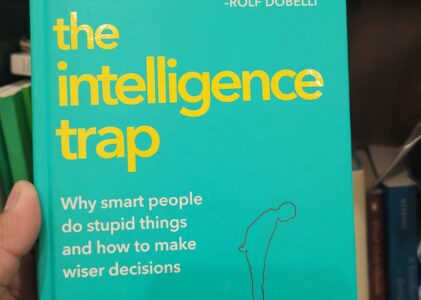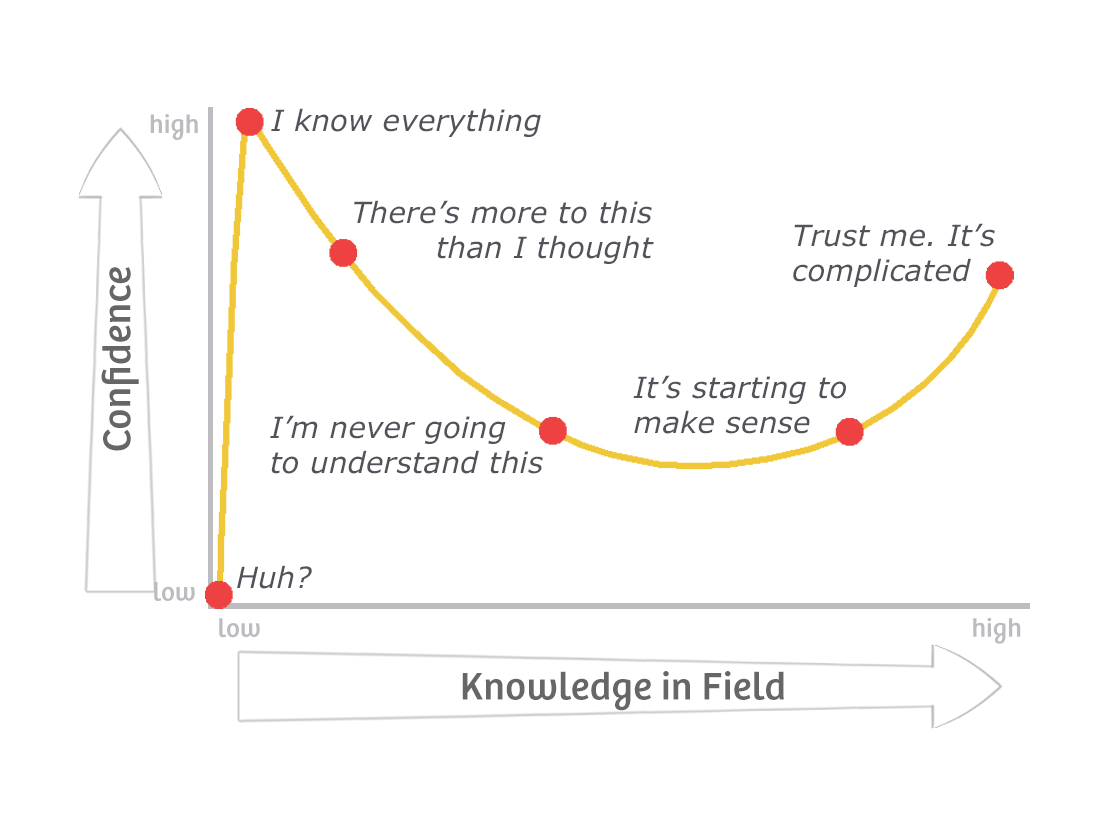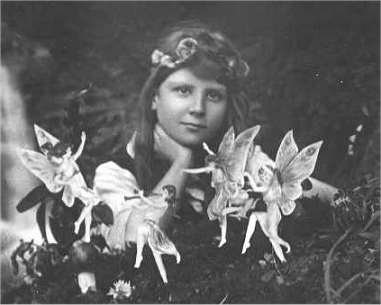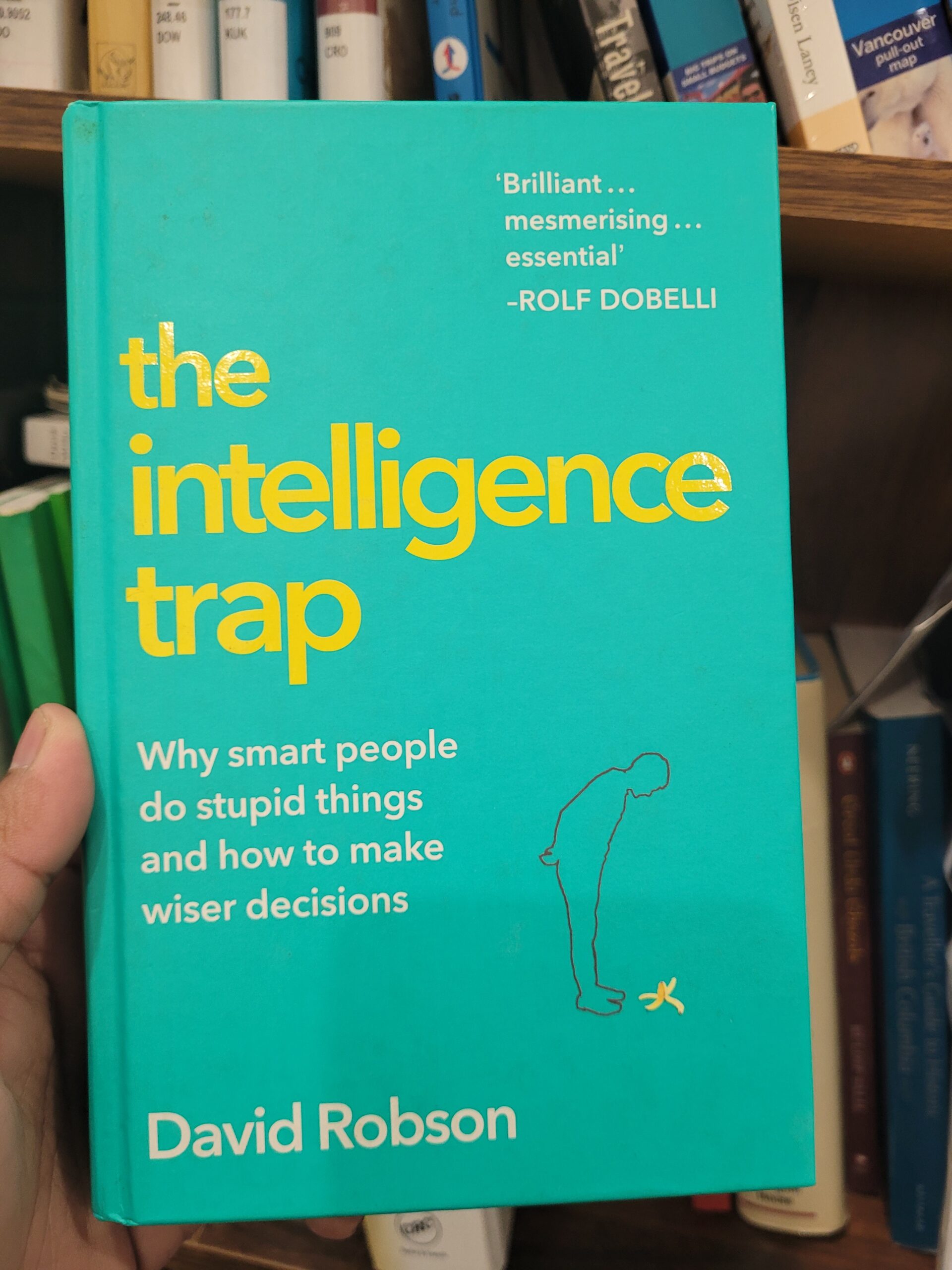
- Name: The Intelligence Trap: Why smart people do stupid things and how to make wiser decisions.
- Author: David Robson
- Genre: Non Fiction/Self Help
- Book Post No. : 58
- What is it about? : Sir Arthur Conan Doyle believed in the existence of fairies which seems off for a genius like him. The Intelligence Trap tries to explain this behavior of high IQ people making seemingly stupid mistakes. Packed with examples and real-life case studies, this book also explains how to avoid the intelligence trap by following some simple techniques.
- How I came to read it? : This was suggested by my childhood friend Deepanjan, who also lent me his copy of the book.
- Did I like it?: Loved it! Easily the second best book I read this year (the first being “How big things get done”).
This book is divided into 4 parts. The first tells us what we are talking about here; that how high IQ people sometimes make irrational decisions. Second chapter shows how we can escape this intelligence trap. The third chapter then moves to show how evidence-based wisdom can improve memory and finally the last chapter shows how teams and organizations can avoid this trap.
David starts the book with the example of Kary Mullis, a Nobel prize winner in medicine who also believes that he was abducted by aliens and that the hole in the ozone layer that was caused by CFCs is a lie. This mismatch between his expertise in one area and his belief in stupid ideas in other areas is difficult to explain. David then goes on to explain other examples and instances of the intelligence trap.
Next, he discusses some of the reasons why people fall in this trap. It could be due to any number of factors but some of the more prominent ones are phenomenon like the Dunning-Kruger effect, the illusion of explanatory depth and the curse of knowledge. Dunning Kruger effect is when people who have less knowledge about a subject feel the most confident. Above is an image which explains this well. Some people, as they tend to gain more knowledge in the field, adjust how much they know vs what they still do not know while some get stuck on the ‘I know everything’ part which some models of the graph below call ‘Mt Stupid’.
Next is the illusion of explanatory depth which is the belief that we understand more about the world than we actually do. Many of these biases can be broken down to its simplest form that we think too much of ourselves and our ability. The curse of knowledge is slightly different in that people with more knowledge sometimes forget that not everyone knows what they know. The listeners might struggle to understand while the speaker who suffers from the curse of knowledge might simply assume that this is common knowledge. I had a professor during my Masters at UBC who struggled to explain simple concepts but was comfortable explaining the more complex ones.
David also talks about biases like confirmation bias, anchoring bias and availability heuristic which skew one’s decision making. High IQ people are especially susceptible to this. Other factors like motivated reasoning and lack of emotional intelligence also play a big part. For me the example of Arthur Conan Doyle stands out in the book and is etched in my mind now. As a kid I read about the Cottingley fairies hoax in a book about Unsolved Mysteries. In 1917 two girls took some photographs in which they claimed they captured fairies. This came to the attention of Sir Arthur Conan Doyle, the famous creator of the detective Sherlock Holmes. Many people at the time debunked the photographs as fake but not Doyle. He was convinced of their authenticity, frequently using his superior intellect and reasoning to thwart any arguments made against the photographs. In doing this he fell in the intelligence trap. It was ironic that the creator of a highly skilled fictional detective who actually inspired many real life changes in detective work was unable to deduce the fakeness of the photographs in this case.
Finally David talks about how we can avoid falling in this trap. Some of the ways we can is by practicing humility, active open-mindedness, mindfulness and decision making strategies. He goes into detail about how each of these methods can offset the effects of the intelligence trap.
- Positives: Lots of real life examples, new concepts, will make you check yourselves multiple times if you are prone to any of the biases mentioned, to the point and overall a fast read.
- Negatives: In books like these I always like it if the author provides a sort of checklist or a summary sheet to keep in handy. Not really a negative but would have been great to have!
- Any other personal notes, observations, fun facts etc.:–
Sir Arthur Conan Doyle was a genius of the highest order. His work in the Sherlock Holmes series made an impact in real life. Read this article on Listverse to see how it did. He is one of my favorite authors and he has written some excellent horror stories as well.
Do the test below and try to answer it. If you did not get it right, its okay, majority of the people don’t. This question is related to cognitive reflection.
Jack is looking at Anne but Anne is looking at George. Jack is married but George is not. Is a married person looking at an unmarried person?
What is the answer?
1. Cannot be determined
2. Yes
3. No
Answer:
Explanation : This is best explained by a diagram. We only have two scenarios here. In both the cases at least one married person is looking at an unmarried person.
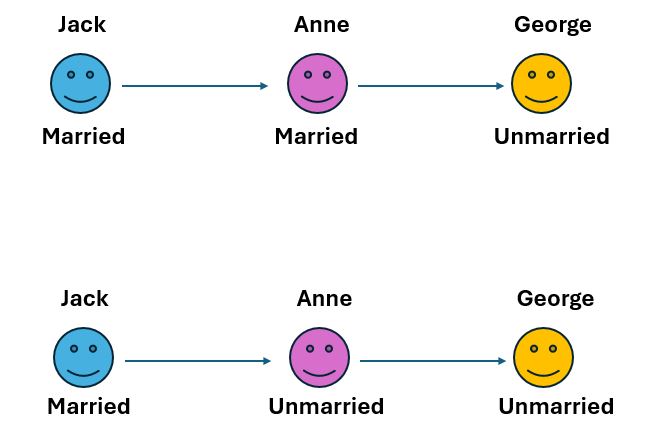
Ans: 2. Yes
An excerpt from the book explaining this test: ” The test measures a characteristic known as cognitive reflection, which is the tendency to question our own assumptions and intuitions, and people who score badly on this test are more susceptible to bogus conspiracy theories, misinformation and fake news.”
